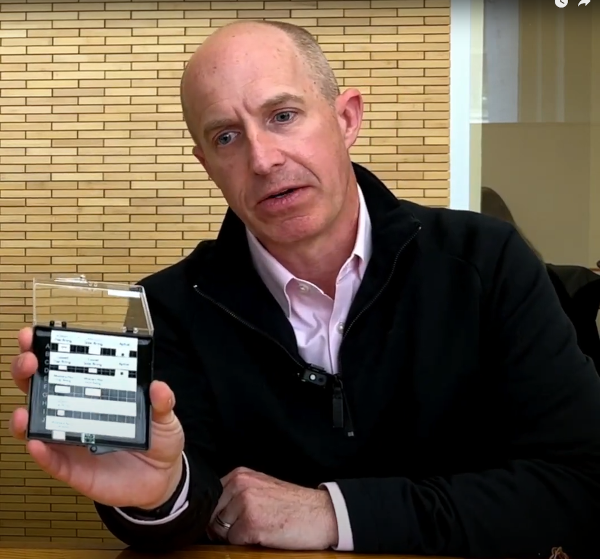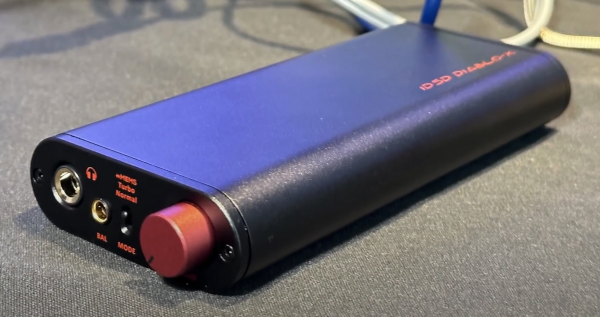xMEMS Labs Demonstrates Tiny Silicon Chip Speakers Page 2
Householder: I showed you the wafer earlier, but to show you the finished product, these are little microspeakers [holds them up] for personal audio. So we're not talking loudspeakers or anything like that. We're talking personal audio. So this would be TWS earbuds, like AirPods or your Galaxy buds. This would be in-ear monitors for audiophiles or even pro audio IEMs for on-stage musicians. These are also optimized for hearing aids, for hearing health. And then some of the next applications we're looking at are AR/VR (augmented/virtual reality) goggles, smart glasses, sleepbuds — these are really kind of the target markets for these products today,

Kneller: A lot of products appear as game changers, and then you never hear about them again. But with things already moving toward solid state, and given the performance and manufacturing benefits, there seems to be a lot of promise here.
Householder: Absolutely. We have to deliver a better product at the end of the day to make people want to change, so that comes back to "what are we doing different in terms of audio quality and fidelity?" We think we've delivered something unique and next level, and then we've made it easier and more reliable to manufacture. So I think those two things are bringing a high level of interest from OEMs. There really isn't an audio brand in the world that is not looking at this technology, or already building this into products.
Kneller: Talking about brands, I was doing some listening here today and I was very impressed. One of the amplifier/DACs (digital-to-analog converters) we were using was from iFi. Can you tell us about that?
Householder: Sure. We've been attending some of the audiophile shows and have met a lot of great companies both in the in-ear monitor space and DAC/amp space. Anyone who has really had an opportunity to listen is generally highly impressed with what we've done. Obviously, we're delivering things in-ear with our transducers but audiophiles like to have a nice high-grade analog DAC/amp to pair with their in-ear monitors.
iFi came and listened and loved what they heard. So back in February, they announced the Diablo X, which is a DAC amp with the capability to drive xMEMS transducers; I believe it’s coming to market this quarter. And then we have a few IEM companies, which are either in-market now or coming to market, with xMEMS IEM's to pair with that iFi DAC/amp.

Kneller: So you have the transducer technology, which would go into different manufacturers' products, and then on amplification side, you need an amplifier that is a little different than what is used to power dynamically driven drivers.
Householder: That’s right. For the for the in-ear monitor space, they like a discrete analog and they want the best quality and are willing to pay for it. So the partnership with iFi and others makes perfect sense. When we get into the TWS space, we need something smaller and obviously more mobile and portable. So, we've built our own amplifier technology to drive our speakers: a little IC that we call Aptos — it's less than 2 by 2 millimeters. You would have our drive IC and our speaker both on a small printed circuit board that would go in these tiny earbuds.
Kneller: So I take it we're going to see more and more manufacturers who are adopting the technology.
Householder: Absolutely. So some are already out in market now, and then more to come in 2023 and 2024.
Kneller: I've got one more question for you. You touched on it earlier. Other than in the audiophile world, your technology has a wide variety of applications. Maybe you can talk a little bit about that.
Householder: Our core focus is in the personal audio space right now but these transducers and their sound signature have generated such positive interest that we've had interest from markets that we didn't even plan to approach. We've got loudspeaker manufacturers pairing a dynamic (driver) at the low-end with an array of MEMS speakers that serve basically as a high-performance tweeter. Silicon as a speaker diaphragm material is immune to breakup. It’s very similar to, say, your ceramic, aluminum, or titanium midrange drivers and tweeters. So they're hearing something out of these tweeter arrays that is certainly next-level. We're also looking at AR/VR goggles, smart glasses, and even sleepbuds. Pairing our speakers with our new Skyline dynamic vent technology creates a lot of interesting applications.
Kneller: I think hearing aids is also something you had mentioned…
Householder: Yes, and hearing aids as well. Balanced-armature drivers pretty much dominate the hearing aid space because of their small size. But as hearing aids go from a voice amplifier, to voice and media, you need something that has wide bandwidth but also small size. And with our Cowell device we basically match the footprint of a balanced armature — we can go deep into the ear canal and deliver full-bandwidth audio.
Kneller: I'm always thrilled when I find a new type of driver or transducer, no matter what it is, and to have one that's moving the technology into the solid-state realm is very exciting, so thanks for the education.
Householder: Great, thanks, Howard.
For more on xMEMs products and technology, visit xmems.com.
- Log in or register to post comments





























































